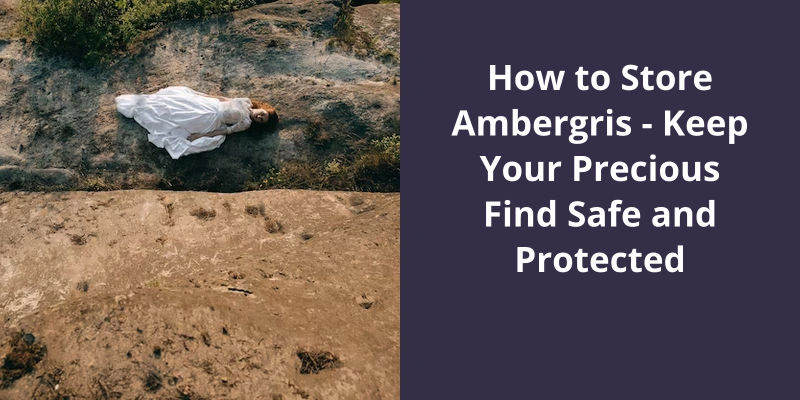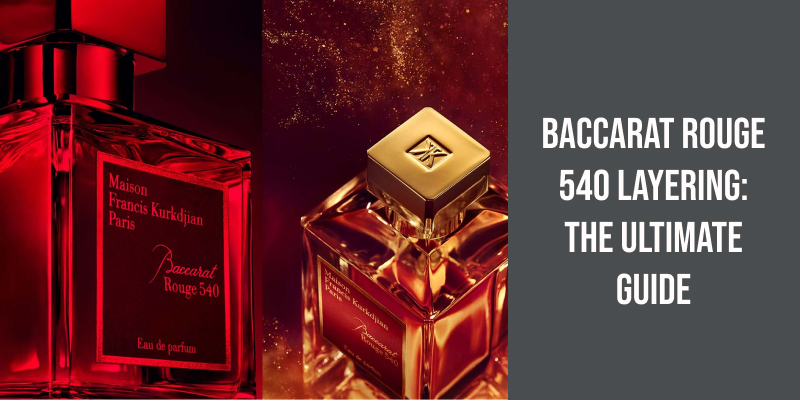Storing Ambergris should be done carefully to maintain its quality. It needs to be kept in a cool, dry place away from direct sunlight since extreme heat can cause it to lose its unique fragrance. Wrapping it in a cloth, specifically silk, helps to preserve its scent and placing it inside a sealed glass container provides additional protection. It’s also advisable to avoid storing it near strong odors, as Ambergris is a natural scent absorber and may take on the smell of other substances around it.

What Can Be Mistaken for Ambergris?
Ambergris has been prized for centuries for it’s unfathomable scent and it’s value as a rare commodity. This waxy substance is found in the digestive tracts of sperm whales, and it’s believed to come out naturally along with their feces. Over a long period of time, this organic material hardens and matures into an unimaginable musky, earthy fragrance.
However, as rare and valuable as ambergris may be, it isn’t an easy substance to come across. It is, therefore, not surprising that objects that are often mistaken for ambergris have garnered much attention. One of the most often confused objects is the sea kidney or marine sponge. While the sea sponge has it’s own uses in beauty and health supplements, it’s nothing like ambergris in terms of it’s scent.
Fat or tallow is another object that’s frequently mistaken for ambergris. Tallow is obtained by rendering the fat of animals like cows and sheep, whereas ambergris is a substance produced naturally by sperm whales. The scent of tallow is entirely different from that of ambergris, and the texture isn’t wax-like but rather oily.
Gum, usually used to chew and relieve stress, is another object that’s sometimes confused for ambergris. Gum is a sticky substance that can be both savory and sweet, while ambergris is musky and earthy with an unmatched scent that not many can achieve.
Pumice, a volcanic rock formed from lava, is another object that can be mistaken for ambergris. While it can be used for exfoliation or cleaning, it doesn’t hold the valuable scent that ambergris possesses. It’s rough and porous and is vastly different from the smooth and waxy texture of ambergris.
Dog poo, though considered disgusting, has sometimes been mistaken for ambergris due to it’s waxy texture and the putrid odor that it emits. However, there’s no comparison of the two in terms of the value that ambergris holds.
Finally, black rubber is yet another object that’s sometimes been mistaken for ambergris. Rubber is made by treating latex, which is a milky substance produced by several plants, while ambergris is a substance produced naturally by sperm whales. The scent, texture, and overall appearance of these objects are vastly different from that of ambergris, making it easier to distinguish them.
The High Demand and Value of Ambergris in the Perfume Industry
- Ambergris is a substance produced in the digestive system of sperm whales.
- It’s a unique scent and is highly valued in the perfume industry.
- Ambergris is rare and difficult to find, which contributes to it’s high demand and high price.
- Some countries have banned the harvesting of ambergris due to concerns about animal welfare and conservation.
- There are synthetic alternatives to ambergris, but they don’t have the same unique scent.
Intrigued by the unique fragrant properties and high value of ambergris, you may be wondering how much you can sell it for. Surprisingly, this rare substance fetches a high price of more than $27 a gram for higher-quality ambergris. The value can increase depending on the aroma, color, and texture of the substance, making it a highly sought-after commodity among perfumers. So, let’s take a closer look at this prized substance and how to sell it for the best price possible.
How Much Can I Sell My Ambergris For?
Ambergris is a rare substance that’s found in the digestive system of whales. It’s a natural secretion that’s produced in response to the irritation caused by indigestible squid beaks. Because of it’s rarity and unique properties, ambergris has become a highly sought-after commodity in the world of perfumery.
The value of ambergris varies depending on a number of factors. The quality of the ambergris is one of the most important factors. Ambergris with a sweeter fragrance is typically more valuable than ambergris with a more faecal fragrance.
Mature ambergris that’s been floating in the ocean for a long time is highly prized by perfumers. This is because the saltwater and sun exposure cause the ambergris to develop a unique fragrance and texture.
Ambergris isn’t easy to come by, and finding a large piece of high-quality ambergris can be a rare occurrence. This makes it a highly sought-after commodity in the world of perfumery.
If you’re lucky enough to come across a piece of ambergris, it’s important to handle it with care. Ambergris can be quite fragile and delicate, and improper handling can cause it to crumble and lose it’s value. It’s also important to find a reputable buyer to sell your ambergris to, as there are many unscrupulous individuals who’ll try to take advantage of you.
How Is Ambergris Used in Perfumery?
- Ambergris is a greasy, waxy substance that comes from the intestines of sperm whales.
- It’s a unique odor, often described as sweet, kind of musky, and earthy.
- Ambergris is used as a fixative in perfumery to help fragrances last longer.
- It’s also used in some high-end perfumes to add a unique and luxurious touch.
- Ambergris can be very expensive due to the difficulty in sourcing it and the limited supply.
- However, there are synthetic alternatives available for those who prefer not to use animal-derived ingredients.
Identifying ambergris can be tricky, but there are a few key characteristics to look for. It’s important to note that breaking apart pieces can devalue them, so it’s best to handle them with care and seek the help of an expert if possible.
How Do I Know if I Found Ambergris?
It’s important to note that it can be difficult to identify ambergris solely based on it’s appearance. The scent of ambergris is a tell-tale sign of it’s authenticity. It should have a unique musky, oceanic odor that becomes more pronounced when warmed. This aroma is what makes ambergris such a valuable commodity in the perfume industry.
Another way to determine if you’ve found ambergris is to perform a simple test. Place a small piece of your suspected ambergris in a bowl of warm water. Wait a few minutes and observe the result. If the substance dissolves, it isn’t ambergris. If it floats to the surface and produces a white, waxy film, then it’s likely that you’ve found genuine ambergris.
It’s crucial to note that not all waxy substances found on the beach are ambergris. Therefore, it’s always important to be cautious and consult experts before valuing potential ambergris finds.
Finding ambergris is rare and considered a significant discovery, as ambergris can sell for thousands of dollars. However, it’s important to remember that the possession and sale of ambergris may be subject to legal regulation in some countries.
Remember, if you’re unsure, always seek the advice of experts before making any decisions about your find. While ambergris is a rare and valuable discovery, it’s important to abide by laws and regulations in your area.
The Current Market Value of Ambergris and How It Is Traded
- Ambergris is a waxy substance produced by sperm whales as a digestive byproduct.
- It’s been highly valued for centuries and is used in the production of luxury perfumes.
- The current market value of ambergris can range from a few hundred to tens of thousands of dollars per pound.
- The trade of ambergris is largely unregulated and poses a threat to the conservation of sperm whales.
- Efforts are being made to promote sustainable use and conservation of this valuable resource.
Beyond it’s use as a key ingredient in perfumery, the versatile ambergris has held a variety of applications throughout history. From ancient Arab civilisations using it as incense and medicine, to current day practices such as culinary creations and even in high-end cocktails, this unique substance has continued to captivate and intrigue individuals across cultures and industries alike.
What Do You Do With Ambergris?
In traditional Chinese medicine, ambergris was said to promote digestion, reduce inflammation, and relieve pain. It was also believed to have a calming effect on the mind and emotions. In Japan, it was used as a remedy for respiratory ailments and as a tonic for the kidneys and urinary system.
Ambergris was even used in the kitchen as a flavouring agent for centuries. It was believed to enhance the taste and aroma of food, especially seafood and rice dishes. Modern chefs have revived this tradition, using ambergris as a secret ingredient in their recipes.
Due to it’s rarity and high value, ambergris is also a sought-after fetish for collectors, who appreciate it’s unique texture, colour and fragrance. Artists have used it as a medium for sculpture and jewellery, while writers and poets have celebrated it’s mystical properties in their works.
Despite it’s many uses, ambergris remains most famous for it’s association with the fragrance industry. For centuries, perfumers have prized it for it’s musky, earthy scent, which adds depth and longevity to their creations. Today, ambergris is still an essential ingredient in many high-end perfumes, commanding prices of thousands of dollars per kilogram.
In recent years, however, concerns have been raised about the ethical and environmental impact of harvesting ambergris. As whales are protected by international law, ambergris can only be collected when it washes up on shore naturally. However, some experts argue that the demand for ambergris encourages illegal harvesting and poaching of whales, posing a threat to their survival. As with many natural resources, the challenge lies in finding a balance between preserving the environment and culture while meeting human needs and desires.
The Controversy Surrounding the Use of Ambergris in Perfumery, and the Search for Sustainable Alternatives.
- Ambergris is a substance found in the intestines of sperm whales.
- It’s been used in perfumery for centuries due to it’s unique scent.
- However, the practice of using ambergris has become controversial due to concerns about whale hunting and animal welfare.
- As a result, there’s a growing interest in finding sustainable alternatives to ambergris.
- Some possible substitutes include synthetic whale vomit, plant-based ingredients, and other animal-derived substances.
- However, there’s some debate over whether these alternatives are truly sustainable or ethical.
Source: What’s ambergris? Natural History Museum
Conclusion
It’s important to avoid condensation by storing ambergris in plastic, but make sure to wrap it in cloth or foil to protect it from external factors. Also, caution should be exercised when handling large pieces of ambergris to prevent any devaluation. Following these storage tips will ensure the longevity and preservation of your ambergris sample.





